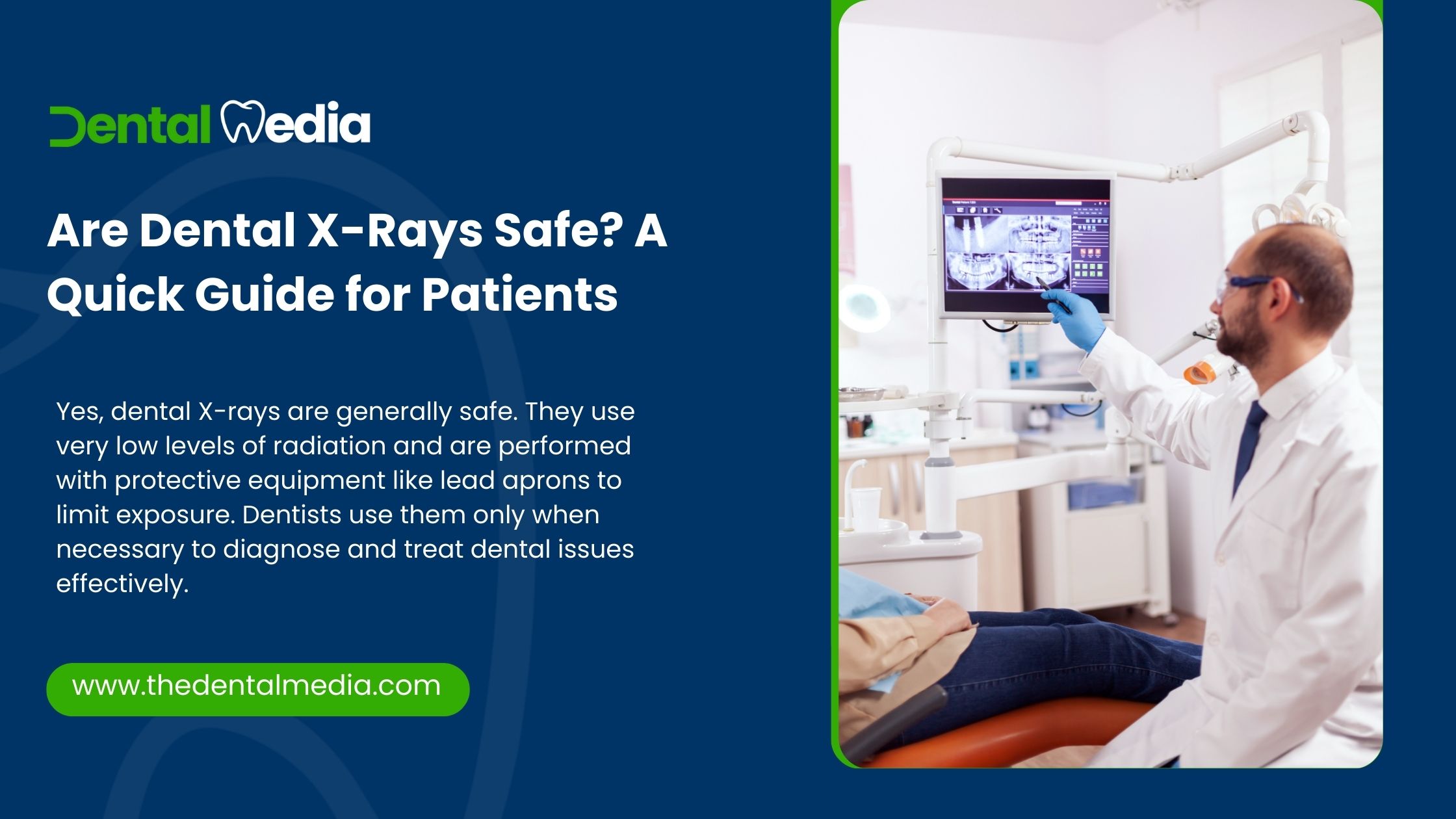Dental X-rays are a routine part of dental care, used to help dentists detect problems that aren’t visible during a regular exam. Many patients, however, have concerns about the safety of X-rays, particularly regarding radiation exposure. This guide offers a clear and comprehensive explanation to help you understand the purpose, safety measures, and overall risk involved in dental X-rays.
What Are Dental X-Rays?
Dental X-rays (also called radiographs) are images of your teeth, bones, and surrounding soft tissues. These images help dentists detect:
- Cavities between teeth
- Bone loss due to gum disease
- Infections at the root of the tooth
- Impacted teeth or developmental abnormalities
- Tumors or cysts
There are different types of dental X-rays, including:
- Bitewing X-rays: Show upper and lower teeth in one area
- Periapical X-rays: Focus on one or two teeth and their roots
- Panoramic X-rays: Show the entire mouth in one image
- Cone Beam CT (CBCT): A 3D scan used in complex cases
Are Dental X-Rays Safe?
Yes, dental X-rays are safe when used appropriately. They emit very low levels of radiation, and modern equipment has significantly reduced this exposure. Here’s what you should know:
1. Low Radiation Exposure
Dental X-rays involve minimal radiation. For example, a standard bitewing X-ray exposes you to about 0.005 millisieverts (mSv) of radiation — far less than the 2–3 mSv people are naturally exposed to each year from the environment.
2. Advanced Technology
Modern digital X-rays reduce radiation exposure by up to 80% compared to traditional film X-rays. Dentists also follow the ALARA principle (As Low As Reasonably Achievable) to keep radiation exposure to the minimum necessary.
3. Protective Measures
Patients are typically given:
- Lead aprons to protect the body
- Thyroid collars to shield the thyroid gland
These safety tools further reduce the already low risk of radiation.
When Are Dental X-Rays Needed?
Dental X-rays are not taken at every visit. Your dentist will recommend them based on your age, oral health history, risk of dental disease, and symptoms. For example:
- Children may need more frequent X-rays to monitor developing teeth.
- Adults with good oral health might need them only every 1–2 years.
- Patients with dental issues, such as cavities or gum disease, may need them more often.
Are Dental X-Rays Safe During Pregnancy?
Yes, with precautions. Although X-rays are typically postponed during pregnancy unless absolutely necessary, they can be performed safely if needed. Dentists use lead aprons and thyroid collars to protect the mother and baby from radiation. Always inform your dentist if you are pregnant.
Who Should Be Cautious?
While dental X-rays are safe for most people, some groups may require extra caution:
- Pregnant women
- Young children
- Patients undergoing cancer treatment
These groups may be more sensitive to radiation, so dentists will carefully weigh the benefits versus the risks before proceeding.
Conclusion: Should You Be Concerned?
In general, no, you shouldn’t be overly concerned about dental X-rays. The amount of radiation is extremely low, and modern dental practices include safety measures to protect patients. The benefits of early detection of dental problems far outweigh the minimal risks involved. If you ever have concerns, speak with your dentist — they can explain the necessity of the X-ray and the steps taken to ensure your safety.
For more help and support, feel free to contact us at TheDentalMedia.com.

